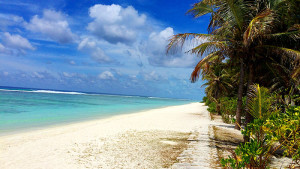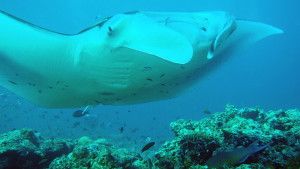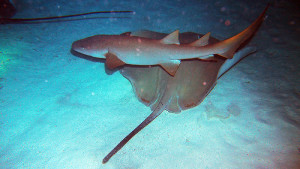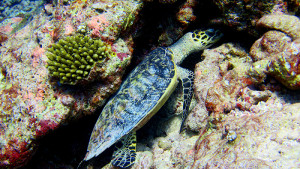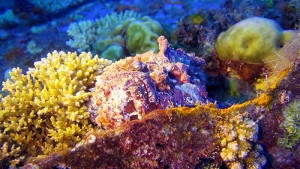Part 1
After experiencing my first liveaboard trip in Egypt’s Red Sea back in 2011, memories, experience and the enjoyment kept flashing back in my head! Every time I browse the photos and the videos taken during that trip, I get inspired to repeat the whole experience all over again! That’s when I’ve started searching the internet about liveaboard options around the world.
I have shortlisted several options according to locations, such as Mexico, Cayman Islands, Maldives, Egypt, Bali and Raja Ampat. After many long days of research I have finally decided on Maldives for the following reasons:
1. Distance
A movie and a nap would entertain a four-hour flight from Dubai. It’s pretty close!
2. Weather
April boasts the warmest sea temperatures of the year. During this month, average daytime temperature hovers around 29 degrees celsius, which is perfect for watersports and seaside activities.
During April, Maldives enjoys nine hours of daily sunshine and relatively little clouds, thanks to the still present northeastern
monsoon winds.
3. Diving Quality
Scuba diving around the Maldives has recently become hugely popular among the diving community. The hundreds of isolated and deserted islands offer an enormous playground for divers to explore. Dive sites are divided to several types: pinnacles, channels, reef and wreck.
With 26 atolls spread over 90,000 square kilometres, there’s plenty of pristine coral to explore. The protected lagoons allow divers to float along with the tide to discover colourful sponges and soft corals.
4. Diving Package Affordability
1,300 USD or 5,000 AED for seven nights and eight days sounded like a bargain to me. It was especially attractive since it included en-suite accommodation on board, all meals, most drinks (water, coffee, tea, etc.), professional divemaster services, scuba tanks, weights, weight belt, air refills, up to three dives per day, one night dive and BBQ on a deserted island.
5. Big Fish
If you love big marine life, the Maldives will make your heart skip a beat! Talk about whale sharks, mantas and an abundance of various kinds of reefs. You may see more big marine life in one dive than you have in your whole dive career!
6. Liveaboard Trips
Liveaboard cruises are plentiful in Maldives, and many are more affordable than you might think. Forget long transfers and bumpy speedboat rides, whatever direction you head you’ll find amazing dive locations and a friendly atmosphere.
Day 1
As soon as I landed at the airport, I was greeted and transferred to the main boat. The MV Sting Ray is an exceptionally
comfortable and spacious liveaboard boat operated by one of the most experienced and outstanding teams in the Maldives.
After the arrival of all divers we spent the first night at the Hulhule Harbor near the capital city of Male. Next morning we started our journey heading towards South Male Atolls.
Day 2
Kuda Giri – South Male
(Wreck Dive)
To most people this is a wreck dive since the site is dominated by the small wreck that lies upright on the south Male seabed between 15 and 35 metres depth. However the name of the site described the giri, or pinnacle, that is found nearby and this too could be considered a dive in its own. You will probably drop to the deepest part of this wreck to begin your dive. However, the currents are often absent or negligible so this is one site the less experienced diver can enjoy. They may wish to stay toward the shallower bow section. The wreck was sunk on purpose to form an artificial reef and has been well and truly colonized by orange, red and yellow sponges, as well as tubastraea cup coral.
When you are scuba diving on the wreck you should look out for the big schools of glassfish that hover together in the interior and a large school of batfish that seems to stay around the wreck. The wreck is penetrable in via a couple of different methods, but it is small and any group penetration needs to be handled in an orderly fashion.
Miyaru Kandu – Felidhoo
Atoll – (Channel Dive)
Not easy for beginners, especially in the presence of strong currents, where you need to descend quickly to the reef since currents in the centre of the channel may be strong enough to wash you away. The upper part and the outer reef have got very nice corals while the channel slope is poor. While swimming, we kept the reef to the right shoulder. Once we reached the bottom at 30 metres, we have rested on a sandy
portion of the reef and started observing grey reefs with incoming currents, white tip reef sharks, jacks, turtles, napoleons, groupers and sometimes also eagle rays on the edge and in the channel.
Fotteyo Kandu – Felidhoo
Atoll – (Channel Dive)
The mouth of the channel is exposed to the ocean and when the currents are incoming, a good variety of fish species gather at the entrance to the channel. This site is considered one of the top dive sites
in the Maldives! Animals commonly spotted include gray reef sharks patrolling the channel mouth, Jack and tuna in deeper water, schools of midnight snappers and red snapper form in huge groups.
The wall features caves, overhangs and swim throughs at different depths. These caves and overhangs are filled with colourful, yellow, soft coral; deeper caves and the overhangs are filled with huge bushes of black corals. The thila (Coral reef just below the surface) in the middle of the channel entrance is the best place to do a safety stop. A surface balloon is a must at Fotteyo Kandu.
To be continued…
Words by: Alaa Ali
Photos by: Guido Peeters, Krystal Leong and Laetitia Zimmermann

